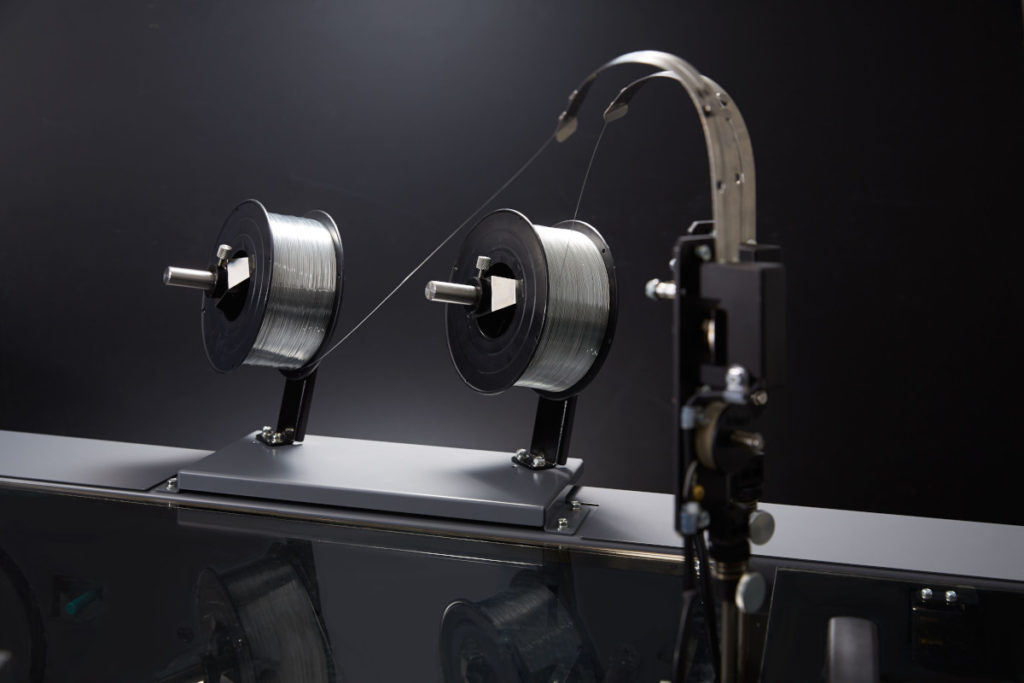As more and more offset printers take the leap into digital print, many wonder if they can get away with using their old bindery equipment to produce shorter run books. It’s important to remember though when that traditional saddle stitcher or saddle binder was purchased, business was different. Run lengths were long. Jobs were printed on a 26, 29, or 40-inch press. And more staff was on payroll. Before moving the job to the saddle binder, highly skilled operators first needed to set up and fold 8, 16, and 32-page signatures on a commercial signature folder. All folded signatures were then fed into the 4-6 pockets of the saddle binder where they would be stitched and three-knifed trimmed. It was a time-consuming process that was reasonable for the job lengths of that time.
The print business has since changed with customers now asking for smaller quantities, variable data, and faster turnarounds. Using a saddle binder for short runs is not going to be the most cost-efficient nor productive means to get the job done. With the competitive nature of the market, printers can no longer afford to have $25-$30 an hour employees to run the equipment. Digital stock is not cheap either and it takes too much time and waste to set up the folder for 4-page signatures. If 50 books are being wasted during setup for a 500 or 1,000-book run, that’s a lot of profit dollars out the door. A saddle binder is just not the most efficient method for a digital job.
So, how can printers keep the costs of small runs low and productivity up?
AUTOMATED BOOKLETMAKING
When it comes to digital finishing, automation is key. Adding or upgrading to an automatic bookletmaker will immediately increase the productivity of the job and save time and money. A fully automatic bookletmaker is a flat sheet system designed to handle shorter job lengths with fewer touchpoints (less job costs), minimal waste (less paper costs), and without the need of a skilled operator (less labor costs). Modern technology makes it easier for inexperienced operators to set up a job through user-friendly interfaces and still produce high quality finished products.
Now, not all automatic bookletmakers are created equal and many older models do not address today’s technology. Some are less automated and still require mechanical adjustments when changing over jobs. Double sheet detection systems are not always consistent. A great deal of print is digitally-based and to read through paper stocks with heavy toner coverage, operators are sometimes forced to turn off the detection system and compromise the integrity of the book.
An excellent product to consider is the Duplo 600i Booklet System, a fully automated collating and bookletmaking solution for both offset and digital output. Perfect for 40-page offset books with runs up to 10,000, the 600i offers the ability to go from a CD-sized application to a letter landscape booklet without even touching the machine. Job setup is done through a PC via the PC Controller software and with a click of a mouse, the entire system is automatically switched over to the next job. Not only does it do size changeovers, but the fold roller and belts on the face trimmer automatically adjust based on the thickness of the book and the exit rollers are changed based on the folded size of the application. No manual adjustments are required, no parts need to be taken out, and no experienced operator is necessary. Up to 6 collator towers can be linked together for a collating application or for jobs with continuous running. It has been this type of flexibility that has made Duplo very popular in the bookletmaking market.
Other features that bring productivity are reliable feed and double sheet detection systems. The 600i excels in both along with on-the-fly rejection of those faulty books in the event of a feed error. Each of the collator bins comes with 2.6-inch capacity to reduce the number of times it needs to be re-loaded. For 100% integrity, optional ultrasonic sensors can be added to detect the air gap between the sheets. Even if two sheets are stuck together with static, the ultrasonic sensors will pick up the air gap and it makes no difference if one sheet has an image and the second sheet has double toner.
Let’s not forget about the power of its Intelligent Multi-Bin Feeding (IMBF) feature. For offset work, the system can be used as a traditional collator but for digital or variable data, the feeding sequence can be controlled for books that are printed pre-collated in reverse. The operator can also run a 10-page job, for example, and combine 5 pages of offset output with 5 pages of variable work.
The 600i PRO Digital Booklet System is another great product that features a high speed sheet feeder instead of a collator for digitally printed output. With both Duplo systems, the operator goes from the press straight to the bookletmaker and gets the job to the loading dock faster.
Saddle binders were designed for traditional offset jobs and remain suitable for those high volume, folded signatures but as customers ask for smaller quantities, printers will keep job costs low with newer technology…and enjoy higher productivity.

National Production Finishing Director
Duplo USA




